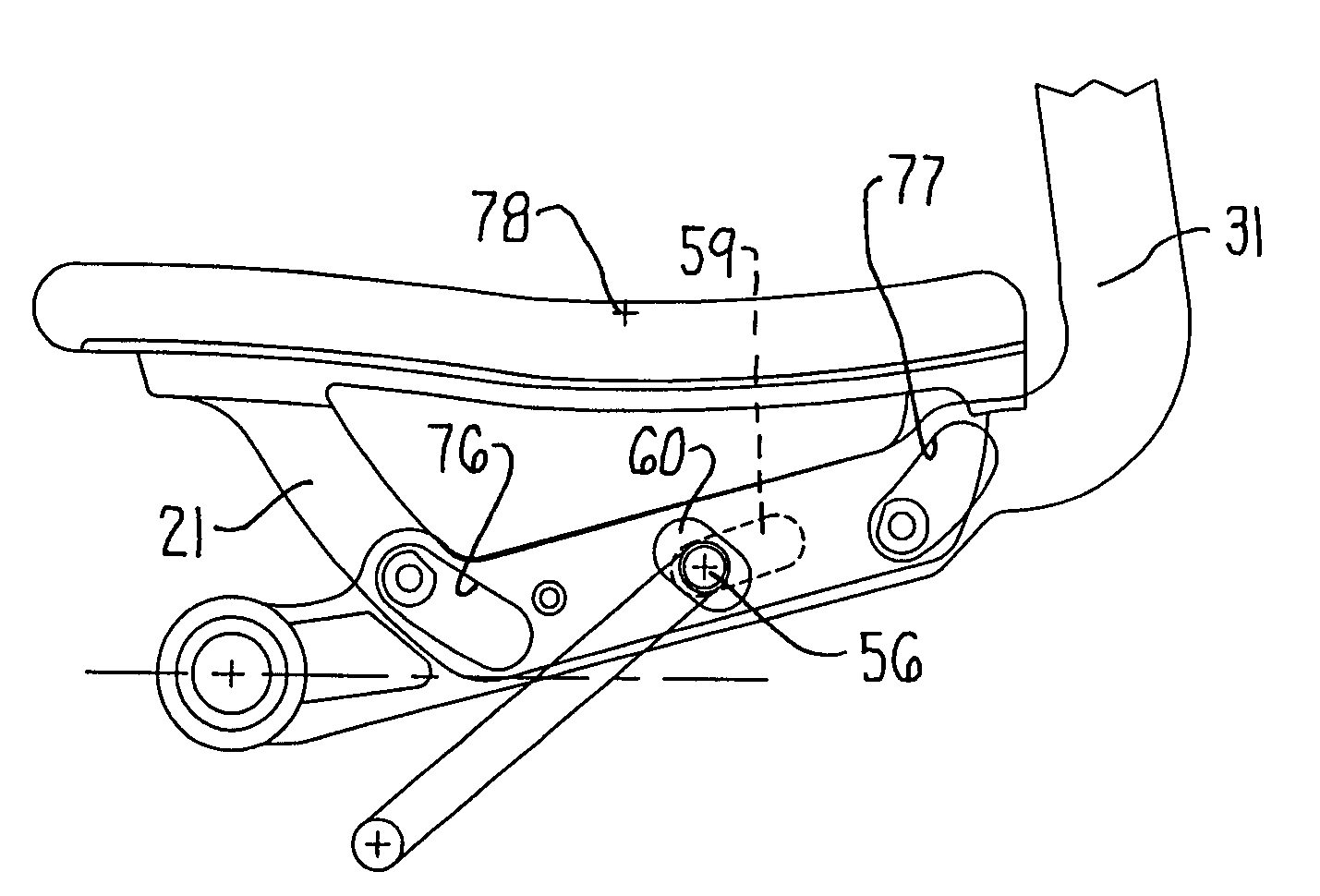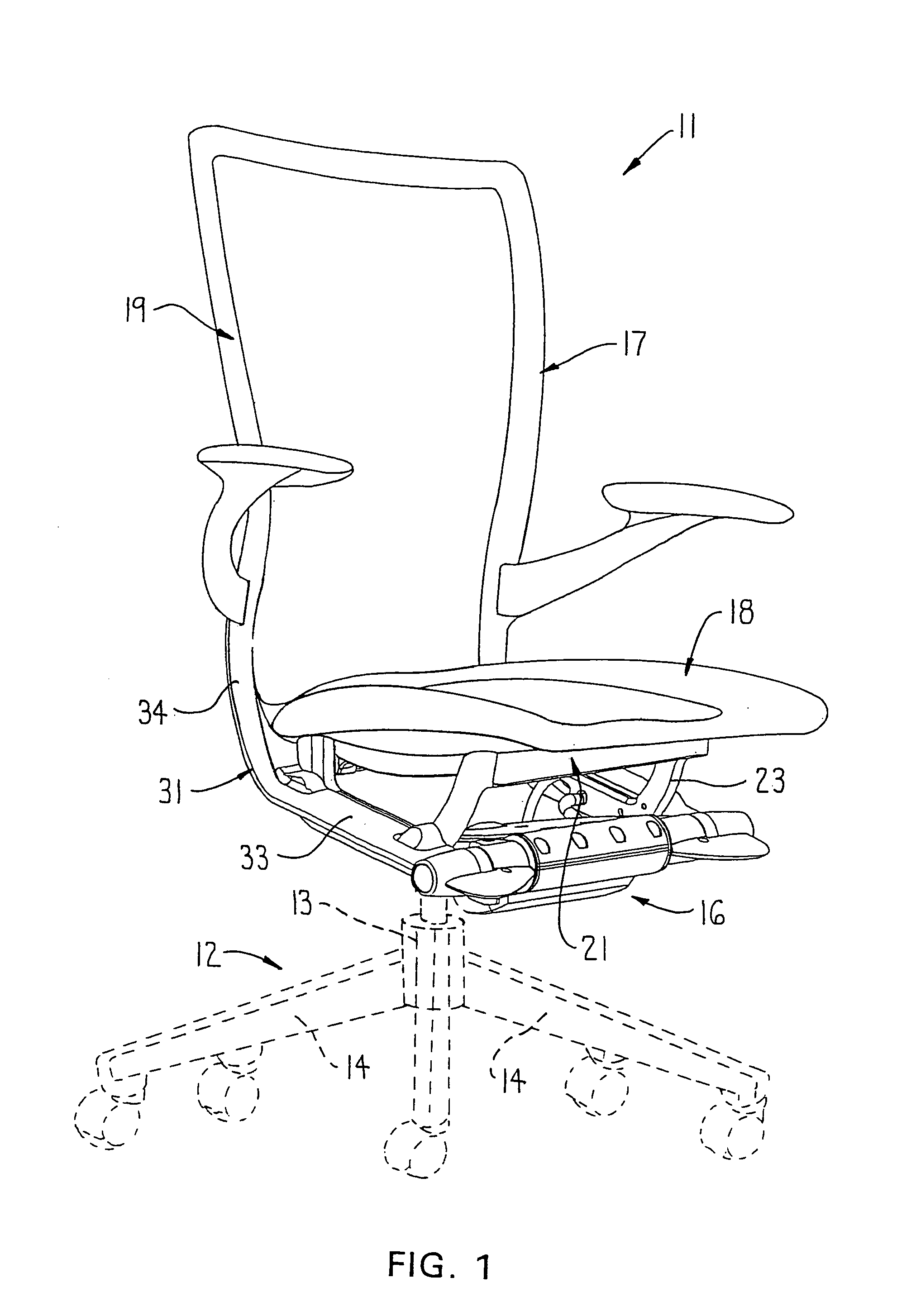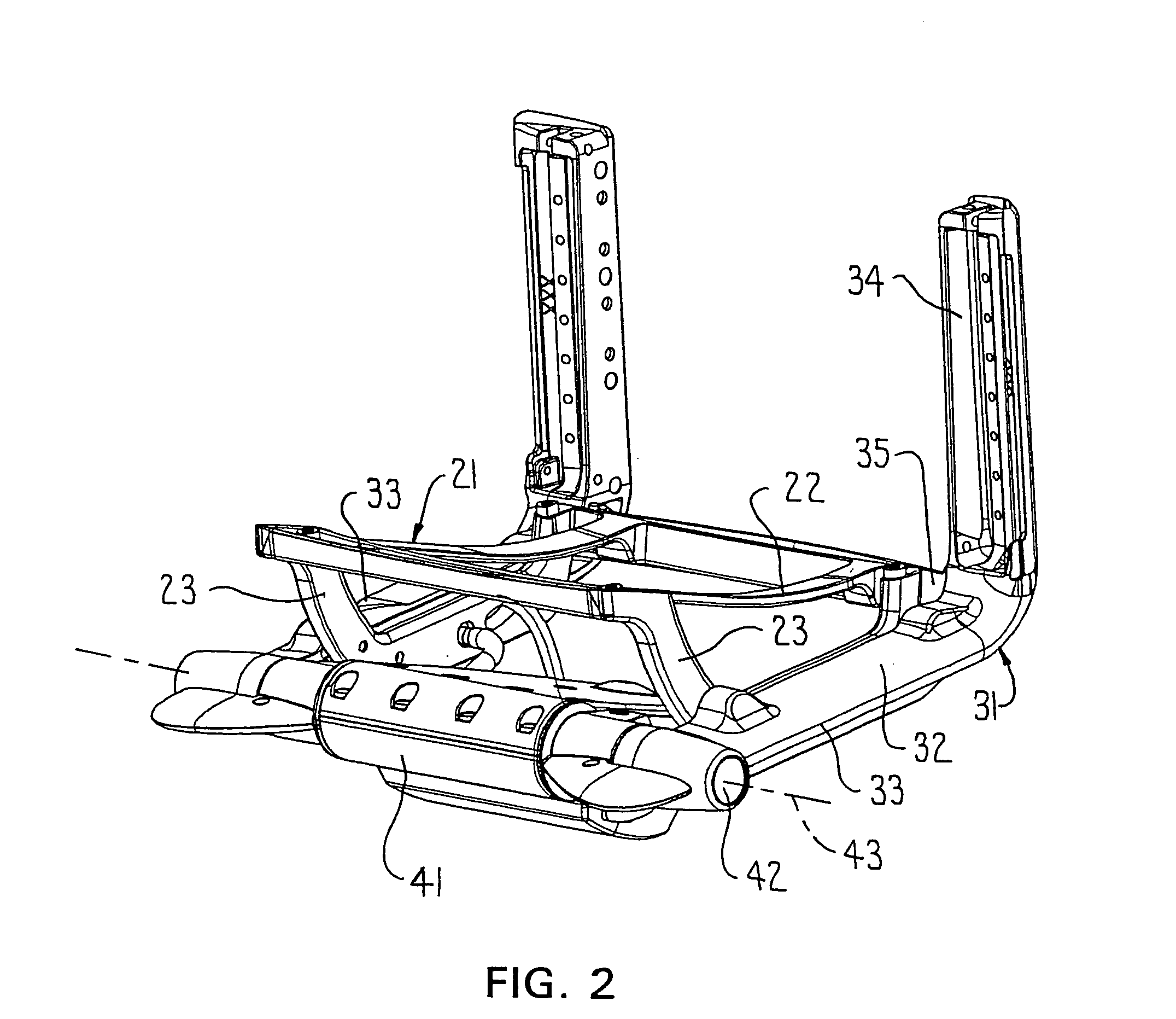Tilt control mechanism for chair
a control mechanism and chair technology, applied in the field of office-type chairs, can solve the problems of increasing the complexity of the chair assembly with respect to required manipulation and assembly time, interfering with occupant comfort, and many of the known mechanisms failing to provide the degree of performance desired
- Summary
- Abstract
- Description
- Claims
- Application Information
AI Technical Summary
Benefits of technology
Problems solved by technology
Method used
Image
Examples
Embodiment Construction
[0024]Referring to FIG. 1, there is illustrated a chair 11 which incorporates therein the improved synchrotilt control according to the present invention. The chair 11 includes a base 12 provided with a plurality of legs 14 which radiate outwardly and are provided with casters for rolling support on a floor. The base 12, centrally thereof, has a height-adjustable pedestal 13 which projects upwardly and, at the upper end thereof, couples to a chair control 16, the latter in turn providing support for an L-shaped seat-back arrangement 17 which includes a seat assembly 18 and a back assembly 19.
[0025]The seat assembly 18 includes a rigid seat frame or cradle 21 defined by a generally rectangular ring-shaped top frame 22 which, adjacent opposite sides, is provided with generally parallel side frame elements 23. The elements 23 are generally U-shaped and protrude downwardly, with upper ends of the legs being rigidly joined adjacent the front and rear corners of the top frame 22.
[0026]The...
PUM
 Login to View More
Login to View More Abstract
Description
Claims
Application Information
 Login to View More
Login to View More - R&D
- Intellectual Property
- Life Sciences
- Materials
- Tech Scout
- Unparalleled Data Quality
- Higher Quality Content
- 60% Fewer Hallucinations
Browse by: Latest US Patents, China's latest patents, Technical Efficacy Thesaurus, Application Domain, Technology Topic, Popular Technical Reports.
© 2025 PatSnap. All rights reserved.Legal|Privacy policy|Modern Slavery Act Transparency Statement|Sitemap|About US| Contact US: help@patsnap.com



